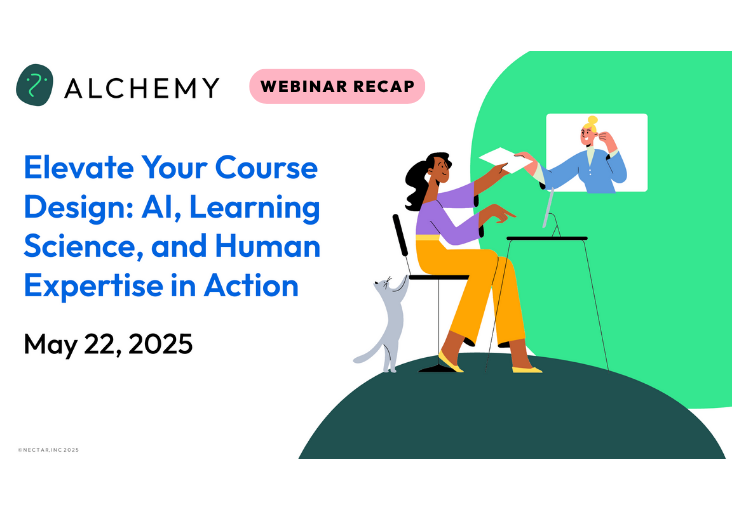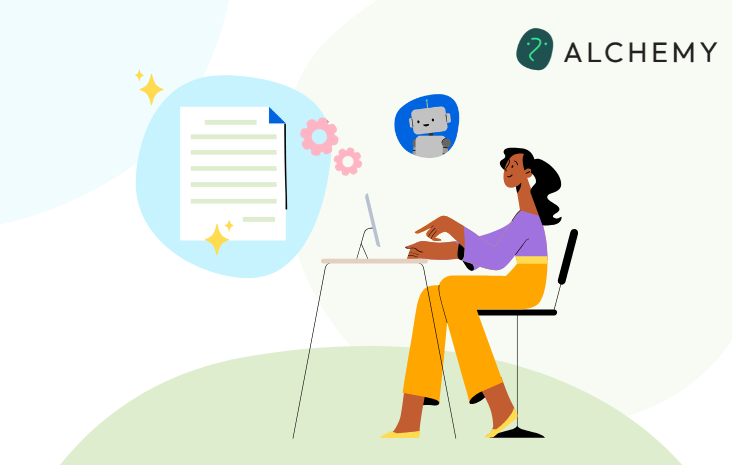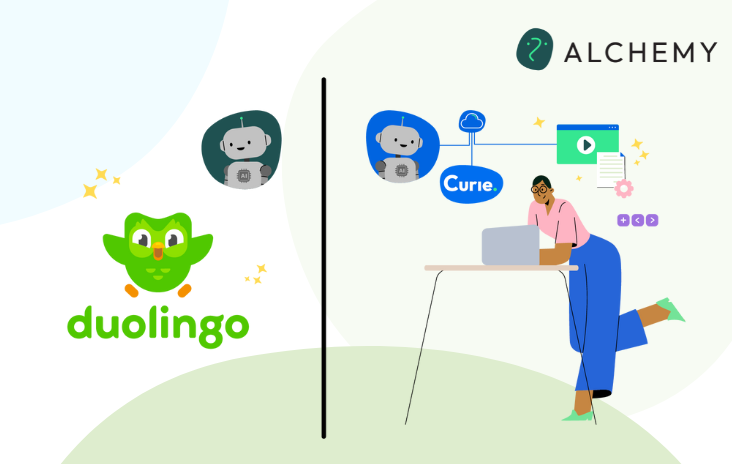Recap
Driving Academic Innovation: Insights, Strategies, and Future Trends

Higher education is at a pivotal moment, where innovation is not just beneficial but necessary for long-term success. In our latest leadership panel, Melissa M. Vito, Ed.D. (Vice Provost for Academic Innovation at The University of Texas at San Antonio – UTSA) and Angela Gunder, Ph.D. (CEO and Founder of Opened Culture) discussed how academic institutions can embrace new strategies, navigate challenges, and build sustainable models for innovation and student success. Their conversation provided actionable insights for leaders looking to implement meaningful change in higher education.
Setting the Stage for Innovation
The webinar kicked off with an introduction by Carrie O’Donnell (CEO of Alchemy), who underscored the critical need for institutions to rethink traditional models and embrace adaptive learning strategies. The discussion was framed around key questions: How can academic leaders foster innovation in higher education? What challenges stand in the way? And how can institutions build structures that support long-term, sustainable innovation?
Key Themes and Takeaways
1. Innovation as a Strategic Imperative
Panelists emphasized that higher education innovation is no longer optional—it’s essential for institutions to remain competitive and responsive to evolving student success strategies and workforce needs. They introduced a framework for innovation, developed collaboratively through a research publication with NASEM (National Academies of Sciences, Engineering, and Medicine).
The report, titled “Bridging Innovation and Access: Academic Innovation to Advance Student Success in Undergraduate STEM Education,“ outlines key principles institutions can follow to implement and scale innovation effectively. It highlights the role of leadership, institutional culture, and strategic investments in fostering long-term change.
2. Operationalizing Change in Higher Education
A recurring theme was the challenge of moving beyond conceptual discussions to intentional educational technology implementation. Our panelists highlighted the role of cross-functional collaboration, pilot programs, and strategic leadership in turning ideas into action.
3. Overcoming Institutional Barriers to Innovation
Structural resistance, risk aversion, and resource constraints were identified as common hurdles. Panelists discussed higher education leadership strategies to navigate these challenges, such as leveraging external partnerships, aligning edtech solutions with institutional priorities, and securing faculty and stakeholder buy-in.
4. The Role of AI and Emerging Technologies in Higher Ed
With AI in education rapidly transforming the learning landscape, the conversation naturally turned to its potential to enhance personalized learning, streamline higher ed administration, and improve student engagement strategies. Our panelists shared an example of AI-driven learning analytics being used at UTSA to enhance student retention and success.
Looking Ahead
The session concluded with a forward-looking discussion on future trends in higher education. Panelists encouraged attendees to embrace a mindset of continuous experimentation, emphasizing that institutional innovation is an ongoing process rather than a one-time initiative.
As our panelists put it, “Start small, be curious, and collaborate.”
Watch the Webinar Recording
This webinar was part of our ongoing higher education leadership series, designed to help academic leaders navigate the complexities of higher ed transformation. If you missed the live discussion, you can watch the full recording on our YouTube to gain deeper insights and actionable strategies. Stay tuned for future sessions that tackle edtech trends, student success strategies, and institutional innovation.
Watch Now

